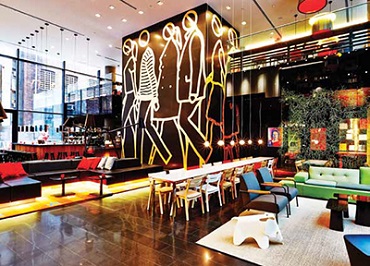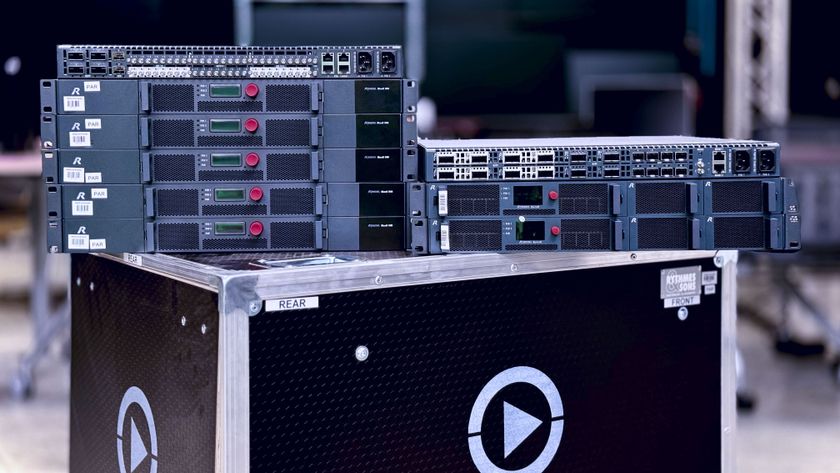Here’s how the story goes: You check into your hotel and are pleased to note the jazzy lobby signage. Up in your room, freshly painted and appointed, you hit the remote on the newly installed flat panel, and behold—the picture before you resembles an abstract painting of Siberia in January. What gives?
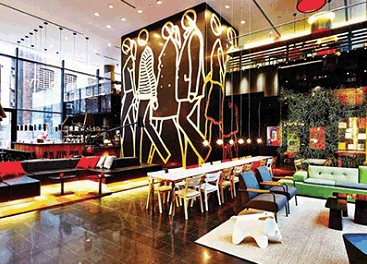
At the new citizenM location in Times Square, the boutique hotel is using a Cloud Electronics DCM 1e, along with a wide range of Bose speakers, to create a mood with audio. The DCM 1e gives the hotel manager the ability to configure and control the entire system remotely from a mobile device or PC.
“It always strikes me as odd that some operators and end-users upgrade their properties and neglect the basics,” said Bob Michaels, president and CEO of ZeeVee. “I was at a hotel in the Midwest recently where a lobby sign announced an extensive refurbishment. Yet, in my room, the picture on the new, 42-inch flat panel was grainy, snowy video.”
Sure enough, the signal he was receiving was, in fact, still analog, even after the refurbishment. “Property owners often believe that by upgrading the televisions in the rooms the picture quality and experience will improve as a result,” he added. “It’s disappointing when there is little difference in the picture quality from when TV sets had tubes.”
That the television experience in many hotels and in other hospitality venues is indeed very poor is not news. Many rooms have flat screen HDTV s but still have a standard definition cable or satellite feed, and have old control boxes located in the room, said Jeff Hastings, CEO of BrightSign. “This is mostly the result of very expensive offerings from slow-moving companies servicing this market sector and antiquated infrastructures. There are a few new companies that are starting to make progress in this market, but I think it will still be a long road ahead before some of these innovative solutions make significant inroads into our hotel experiences.”
Always Be Changing
This is an exciting time for the TV industry, with changes occurring rapidly in many areas, such display types, form factors, and screen sizes, as well as the thinner screens and higher pixel densities, noted Richard Lewis, vice president of B2B research and technology at LG Electronics US A. “Then there’s the world of smart apps. That’s a lot of moving pieces, all accelerating at a faster pace than ever before.”
These changes can be bewildering to some customers. In hotels, where the TV has a useful life of five to seven years, hoteliers typically don’t deal with television services on an ongoing basis, he said. “We try to use a consultative process to help them on the path to the best solution, not just for the right hotel TV s, but also for a complete solution within the ecosystem of their services. This could be a simple offering such as free to guests, all the way up to full featured VOD service delivered over IP .”
Until recently, improving the quality of the picture and video meant wholesale replacement of equipment and infrastructure; certainly cost prohibitive to most.
“The problem extends to other hospitality areas where upgrades are required but budgets are limited, Michaels explained. “Upgrading to digital distribution often results in a video quality improvement that 80 percent of the customer cannot distinguish from true HD . Digital SD in most cases costs no more per screen than analog SD from the content provider and digital SD equipment is far simpler to install and maintain and less expensive.”
Every hotel, irrespective of size or star rating, has a number of AV requirements to address. The operator has to have an easy way to add local content channels to the existing infrastructure, he added. “Since the majority of hotels today have coax as their primary distribution means, tapping into the existing coax plant is simple and cost effective. A high-quality signage channel can make the most powerful first impression a property could offer.”
>>> SCN Online SurveyAt this stage in its life, which vertical can benefit the most from 4K? Turning Up the Music Profile
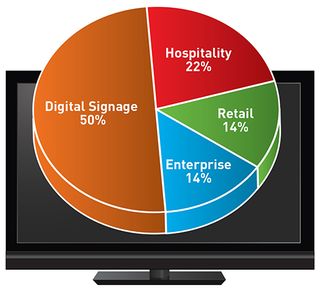
Hotels, like any other branded businesses, need to project their brand persona. With a very captive audience they have an opportunity to do so with a brand soundtrack; music that does not conflict with the brand persona, is not interrupted by advertising (sometimes from competitors), is seamlessly integrated with video (i.e., televisions in a bar area), lighting, and life safety, is engineered to provide the correct control at the right locations to the right people, and sounds good too, said Michael J. Kurcab, vertical market manager of hospitality for Harman Professional Group. “The need for a well-integrated, well-engineered quality system is critical to the brand experience. It’s a compelling argument with strong supporting evidence.”
A stroll down the Las Vegas strip verifies that each and every property along the way is positioned to promote itself with music, from Caesar’s with Celine to the Hard Rock’s very core, he noted. “This is evidence of the power of music and entertainment to help hospitality businesses in competitive markets successfully segment and differentiate.”
But what if the experience does not match the expectation? “The press, word of mouth, the blogosphere, and social domains would instantly become negative and the hospitality enterprise would face crisis,” Kurcab said. “AV and its capacity to provide brand experiences and entertainment experiences is appreciated in Las Vegas and, as consumers acquire HD technologies in their homes, it’s becoming increasingly prevalent in the global hospitality market.”
A trend both in North America and internationally is the emergence of ultra-nightclubs and day clubs such as Hakkasan and DayLight in Las Vegas—live music venues/restaurant combos that are bringing a high quality audio experience, he mentioned.
With the music licensing process dramatically simplified in the last few years, integrators now have more options for motivating clients to go beyond the limited offerings of online music by expanding into music profiling.
“AV integrators can work with a variety of companies that have the libraries of music to provide a more curated music experience,” Hastings said. “What used to be a black art of licensing music can now be done with a few standard contracts.”
Several companies, he noted, are starting to pioneer music curation. “One such start-up is called RockBot. They have a music offering that allows for the typical playlist selection to be played as un-curated music. With a video screen in the venue, patrons can then start selecting songs to be played from their mobile device. If the patrons start ‘liking’ one patron’s music selections, that patron can become the virtual DJ for that venue. This gives you the advantage of a dynamically curated music experience based on the current customer based at that time. This is an offering that is available for easy installation for local AV integrators.
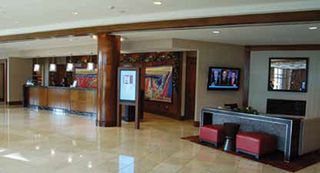
Every hotel, irrespective of size or star rating, has a number of AV requirements to address. At Cloud Electronics, two recent zoning equipment projects make it up close and personal. “It’s no longer enough to engage the customer solely with media content streamed to all locations,” explained Wesley Garrett, general manager for the Americas at Cloud Electronics. “Hotel and spa owners request a truly unique and sometimes personal interaction. Recent Cloud Electronics installations into a chain of luxury boutique hotels included remote inputs in each zone for DJs or a local music source, as they wanted two locations for the rooftop pool. To these cutting-edge hotel operators, background music is just not interactive enough to engage with the clientele being courted in lifestyle hotels. What they want is personally curated content.”
Operators of spas and salons recognize that catering to a client’s every whim by providing a more personal experience right down to media content forges a lasting connection, he said. “Cloud Electronics responds to this need by easily adding remote inputs into each spa room or salon chair, allowing customers to provide their own soundtracks. Eight inputs at the mixer were available, but the sounds of falling water or rolling waves are not everyone’s cup of tea. The input in each room allows customers to connect their personal music source, personalizing the spa experience.”
Read the Signs
With digital signage content evolving beyond weather reports and wayfinding to include branding, it’s becoming a wasted opportunity if there is no dovetailing with lighting and sound, Kurcab said. “Harman’s IDX systems are great examples of how component-level technologies can be engineered into cohesive, effective systems, purpose-built for hospitality applications. The system goes beyond digital signage to leverage audio, video, and data to help hotels effectively communicate with their guests and promote their brands.” IDX features components from Harman brands and adds “highly intuitive configuration, automation, and control,” Kurcab elaborated. “It simplifies complex messaging and communications, and we’re seeing very strong adoption in the hospitality marketplace.”
Karen Mitchell is a freelance writer living in Boulder, CO.
citizenM’s Audio Edge
Hotels looking to deliver a memorable stay for their guests are increasingly turning to audio as an indispensable tool. Past the architecture and interior design itself, there is no better way to inject a property with a specific mood than a unifying, distinct audio experience.
This was the case at citizenM’s recently opened 230-room Times Square location. Headquartered in Amsterdam, citizenM is making a name for itself in the competitive boutique hotel market by appealing to the modern mobile traveler. With additional locations in Amsterdam, Glasgow, London, Paris, and Rotterdam, the chain’s aim is to combine an offbeat sensibility with affordable luxury, technology, and style.
Along with beautifully designed interiors, music is playing an outsized role in contributing to the hotel’s goals. Greg Sexton of SLR Projects oversaw the design and installation of the audio system at the Times Square location, and attested to citizenM’s desire for comprehensive audio. “They didn’t want any inconsistency when guests navigate from one part of the hotel to another,” said Sexton. “They wanted a continuity of background music, so we provided a properly distributed system including the ground floor, courtyard, roof terraces, gymnasiums, etc.”
This was all made possible by a Cloud Electronics DCM1e at the heart of an audio system comprised of a wide range of Bose speakers, is. An ethernet-enabled version of Cloud’s popular DCM1, the DCM1e gives users the ability to configure and control the entire system remotely from a mobile device or PC.
“It’s quite useful for the hotel managers to be able to control the sound system in this way,” Sexton explained. “They’re already controlling all their other systems— heating, ventilation, and lighting—from tablets.” The managers have backup override as well, so there is no chance of a low-level staff member or bartender throwing their iPod on and messing with the hotel’s meticulously crafted vibe.
Sexton gave citizenM’s management team great credit for placing quality above cost in this installation. “They have a good understanding of the products they are using and what they want to achieve,” he said. “The first question was ‘How do we do it well?’ Not ‘How much will it cost?’ And this is reflected in their business generally.”
—Chuck Ansbacher
Which areas of hospitality are seeing the most demand for 4K, and how can integrators best sell this new format to hospitality clients?
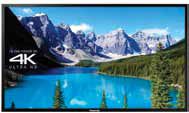
Panasonic 4K LQ70 Series Display While a sought-after technology, 4K deployments are still in their infancy across most vertical markets, including hospitality. However, we are starting to see increased interest in 4K displays in very high-end suites, as well as digital signage/ entertainment applications where a big impact is needed, such as in a casino or sports bar. Currently, the greatest barrier for adoption is that only a limited amount of content is available in 4K. Still, that is rapidly changing as more content providers are filming in 4K as a way to future-proof their recordings. Similarly, integrators should emphasize the value of an investment in 4K technology to hospitality customers that are considering an upgrade to their display systems over the next one to two years.
—Art Rankin, Senior Director – AV Technology, Panasonic System Communications Company of North America
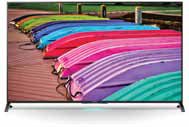
Sony FWD-55X850B 55-inch ProBRAVIA professional 4K UHD display. Several areas across the hospitality market are suited to 4K, especially gaming and casinos— for example, in a sports book. Also, more and more theme parks are incorporating 4K imagery into many of their simulation rides. So, the 4K opportunities in hospitality applications are certainly great.
Hotels and hospitality facilities need to consider several factors when deciding to upgrade the TVs and flat panels in their guest rooms, and the displays in lobbies, meeting and conference rooms, restaurants, or lounges. Essentially, any place on a property that would be receiving a signal is affected.
Just like they did with HD, consumers are not just using their increasingly sophisticated 4K TV sets just to watch TV. They’re connecting gaming consoles, Blu-ray players, PCs, and other devices to their sets, streaming 4K content and more.
So when these tech-savvy consumers travel—for business or pleasure—they now expect the same or better quality, connectivity, and choice of high-quality entertainment options in their hotel rooms that they enjoy at home.
For integrators, helping a hotel choose a 4K display solution means much more than simply buying and installing new sets, and many of the issues were similar to the HD transition. Think of a hotel in Las Vegas, for example, that has 5,000-plus rooms. Each set in all those rooms needs to be connected and networked in order to receive the same services, including pay-perview and video-on-demand content. Hotels also need a way to easily update all the sets across a property, so each display is in sync; there are issues related to wiring, network connectivity and bandwidth that also need to be considered. It’s important to keep in mind that displays need to fit a room’s décor. Displays also need enough input and output flexibility to accommodate tuners, networking cards, or other optional boards.
—Shari Sentlowitz, National Market Development Manager, Sony Electronics
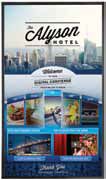
Planar EP5804K Touch display. At Planar, we see many 4K installations in restaurants, bar venues, and hotels. Many decision makers in these businesses find that video imagery of meal offerings, beverages, and services can lead to increased revenue. The customers’ visual experience is such an important factor in the hospitality industry. The realism achieved with 4K makes the experience even more visceral. An added advantage is that with the additional pixels and readability available with 4K technology, nutrition information, and other details (often required by state laws) is easier to display without detracting from the design and branding of menu boards or advertising. For entertainment purposes, as in a luxury sports bar, 4K displays can show four distinct 1080p sources simultaneously, then easily switch to scale one source across the entire display. This is a great feature when there are multiple feeds to watch or when the “big game” should dominate the space. This application can also extend to VIP suites at sports arenas and other private dining experiences.
Another area where we are seeing a demand for 4K signage is in the healthcare industry. Wayfinding is a huge application in this space and can enjoy the same benefits as hotels. There is a growing use of displays used for decorative purposes or for procedure education and advertising, not only in hospitals, but also in medical and dental offices.
—Jennifer Davis, Vice President of Marketing, Planar Systems
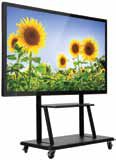
BenQ’s 84-inch RP840G 4K UDH interactive display. We believe that 4K for the hospitality sector has the strongest appeal to event management and enhanced wayfinding applications. The ability to divide up a screen and have a window of highdefinition video feed at an event that can then be selected via a content menu is ideal for a 4K display. For traditional wayfinding—such as in a museum—menus can be enhanced via high-definition images for a more rich content experience where the user is able identify an area of interest based on images as well as text.
—Bob Wudeck, Associate Vice President, Strategy and Business Development, BenQ America Corp
Very soon after the introduction of larger format 4K technologies, the hotel industry responded rapidly by adopting it in a couple of key areas.
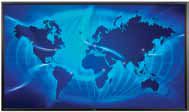
LG 84-inch LED widescreen UHD 84WS70BS-B display. Hotel lobbies present a unique opportunity for branding and experiential impact. For example, Hotels are installing digital displays behind the counter to capture the attention of guests checking in with larger and more detailed images to help establish greater emotional and cognitive impact. A digital display that greets guests upon entry to a hotel creates a welcoming environment to help weary travelers calm down to a state of mind closer to what they feel when they arrive at home. And it also opens up a point of engagement to create a stronger brand impression and reduces perceived wait times at a point of the service engagement in which the customer is usually anxious to complete the process as quickly as possible.
—Dan Smith, Director of Sales, LG Electronics
We consider hospitality as hotels and conference centers. We really don’t see a demand right now for 4K in this space. An area we see a lot of interest for 4K is the retail space—especially high-end/luxury brands. These customers want to display their fashion at the highest resolution possible for their flagship stores.
—Keith Yanke, Senior Director, Product Marketing, NEC Display Solutions of America
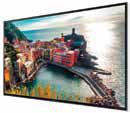
For Samsung, UHD commercial displays in hotel lobbies capture guest attention, share information, and leave a powerful brand impression UHD commercial display technology opens up new possibilities for the hospitality industry to create impactful digital signage or video wall solutions that engage, entertain, and inform their guests. As UHD begins to gain ground in commercial environments, we see high-end hotel brands as among the earliest adopters.
Whether it is in the lobby, restaurant, business center or other highly visible location, UHD displays paired with dynamic 4K content capture attention and leave a powerful brand impression.
One common concern raised by 4K skeptics is lack of available content, but this argument is far less valid for hotels deploying digital signage than for consumers that are more reliant on UHD broadcast content. Creating video or animated content in UHD is well within the grasp of most creative agencies or even in-house art directors–in fact, 4K content can be recorded with remarkable clarity on our Samsung Galaxy S5 smartphone. It’s also important to point out the UHD displays can upscale existing full HD content–some more effectively than others–to make it look more vibrant and rich.
The transition to UHD is underway, and we expect 4K to become the new standard in two to three years. So even if hospitality customers do not immediately plan to display 4K content, forward-thinking integrators should think seriously about spec’ing out UHD to future-proof their projects.
—Michael O’Halloran, Digital Signage Product Marketing Manager, Samsung Enterprise Business Division
